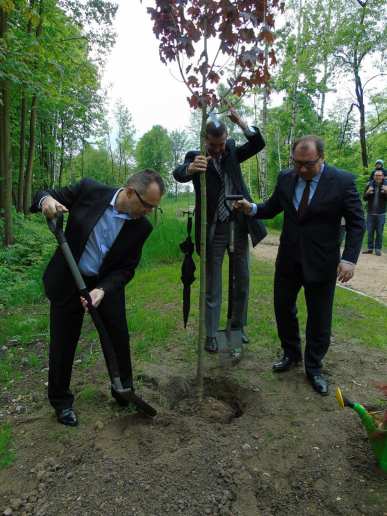 Garden and environmental protection
Garden and environmental protection
Allotment gardens are usually equipped with public green spaces and communal facilities, like division home, fairground or – wiese, children's playground, jewelry plants, small sports facilities, seats and discounts. The proportion of these public parts of the facility makes including the paths 10-30 percent of the total area. Such allotment gardens are part of the green system of cities and communities. They are increasingly being developed into areas of local public recreation. The bioclimatic and hygienic importance of public green spaces and recreation areas also applies to allotment gardens.
In recent years, more and more branches have opened their doors to visitors and those looking for relaxation from the nearby residential area, who do not cultivate a garden in the complex themselves. For allotment gardens, which have a high recreational value not only for their own garden users, but also for the residents of the residential area, received the award as a “state-recognized local recreation area” created. The necessary criteria are specified by the councils of the towns and municipalities. In striving for this recognition, the divisions are supported financially and materially by the state bodies. Have until the end of the year 1432 Allotment gardens and parks of the title "State-recognized local recreation area” won. This is happening for the first time since 1977 a planned development of allotment gardens. General development plans include the integration of new allotment gardens into the green system of towns and communities years in advance; they arise mainly in the vicinity of the new development areas, where there is the greatest need for allotment gardens.
New allotment gardens are often built on residual, Splitter-, Wasteland- and landfill areas created, the years- and for decades left the outskirts and the surrounding landscape overgrown and unkempt. Allotment gardens and allotment gardens built on wasteland areas save the cities and communities social effort.
Allotment gardens are also being created in landscape protection areas, especially weekend settlements. The most important task here is the harmonious integration into the landscape. In the implementation of the state cultural law, this is often associated with conditions, the state organs for the buildings, for the design and use of the gardens etc. a. grant to the divisions and their members. Obligations arising from this relate primarily to the requirements of the State Culture Act on nature- and environmental protection, the protection of native flora and fauna, especially the birds, and the protection of other wild animals, as well as keeping the riparian zones of public waters free from development and subdivision.
But there are also many allotment gardens, the 70 Years and even older and because of their often disorderly development, her overaged, Too dense fruit trees do not fit so harmoniously into the picture of the cities and communities. But with that comes an obligation, to transform both the grounds and the gardens themselves to meet current and future needs. Some things have already been done along this path, but the result is still unsatisfactory; because these systems must not be seen as foreign bodies in the city or community or. affect the landscape, they must blend in harmoniously with their surroundings.